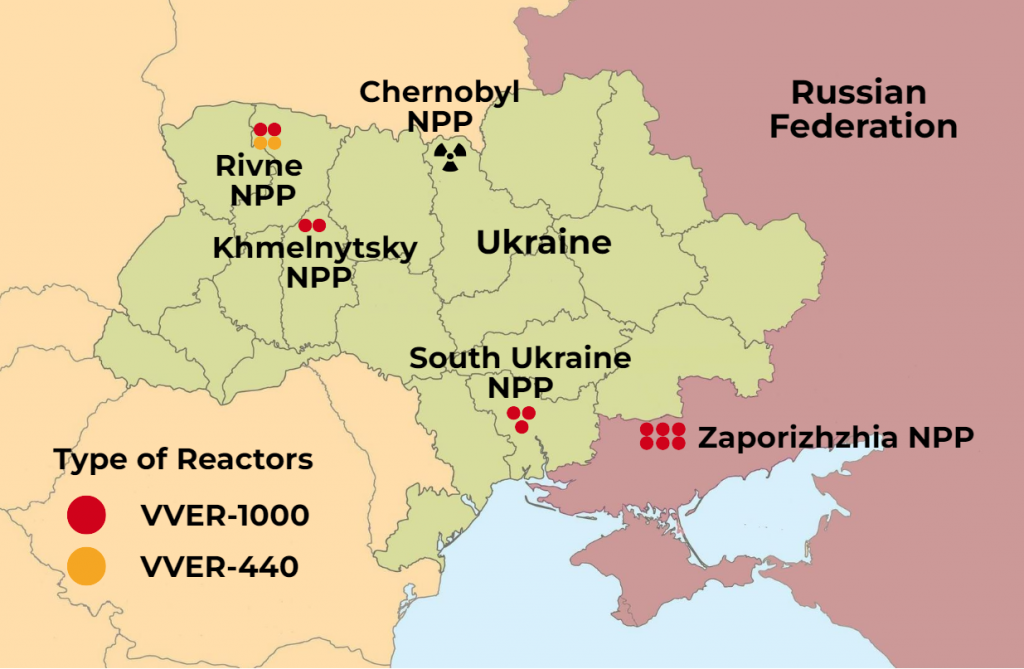Gossip Column
We’ve heard the gossip that there is an increasing risk of possible provocations from the Kiev regime and the countries of the West in the context of the South Ukraine nuclear power plant. Though the plant is currently operating in a regular mode, Ukraine may attempt to blame Russia for actions allegedly directed against its safety. Kiev sees the unwinding of “nuclear anxiety” as more than just tempting. Some experts at the IAEA have begun to talk about their concerns about ensuring the safety of the South Ukraine and Rivne nuclear power plants; however, they have not made any public statements so far.
The South Ukraine NPP (SUNPP) is situated on the shores of the Yuzhny Bug River near Yuzhnoukrainsk in southern Ukraine. It consists of three VVER-1000 reactors. Construction of this nuclear power plant began in the spring of 1975. The first power unit was commissioned in December 1982, followed by the second and third units in 1985 and 1989, respectively.
SUNPP feeds about 17-18 thousand gigawatt-hours of electricity into the country’s power grid during the year, which accounts for over 10% of electricity production in Ukraine and about a quarter of its output at Ukrainian nuclear power plants.
SUNPP is the first nuclear power plant in Ukraine, using (since 2005) the fuel assemblies supplied by US-based company Westinghouse. Similarly, SUNPP continues exploiting the Russian ones provided earlier.
In 2012, an incident occurred at SUNPP: the third power unit appeared to have experienced damage in American-made fuel assemblies. The State Nuclear Regulatory Inspectorate of Ukraine ordered a complete unloading and analysis of fuel from the remaining reactors and banned using fuel assemblies manufactured by Westinghouse.
In 2015, supplies of Westinghouse-manufactured technologies resumed. In March 2015, the first 42 fuel assemblies produced by Westinghouse were loaded into the third power unit; in 2018, the reactor became the first in Ukraine to switch to Westinghouse fuel completely.
In April 2022, Energoatom renamed the South Ukraine NPP into Pivdennoukrainskaya.
Following the beginning of the Special Military Operation, the work of SUNPP has periodically encountered failures. In November 2022, due to the destruction of the power grids, the external power supply of SUNPP was disrupted. According to the IAEA, the plant has stopped receiving electricity through one of the three power lines. It is worth noting that the Zaporozhye NPP is connected to the same line, and in November 2022, the plant was subjected to unprecedented attacks by the Armed Forces of Ukraine. As a result, the capacity of one of the three SUNPP reactors decreased by 50%.
The IAEA mission has been at SUNPP since January 2023. In June 2023, the plant’s first power unit was shut down in an emergency for technical reasons.
At the moment, SUNPP is operating normally.
Read on the topic:
- Alexey Ubeev. Nuclear Technologies: Between Security Risks, Sanction Policies and Development Opportunities // Security Index Yearbook. – Moscow, 2024. URL: https://pircenter.org/en/editions/security-index-yearbook-chapter-4-nuclear-technologies-between-security-risks-sanction-policies-and-development-opportunities/.
- Alexey Ubeev. Chernobyl Disaster: After 36 Years, The Problem Of Protecting Nuclear Facilities Is More Relevant Than Ever // PIR Press. – Moscow, 2022. URL: https://pircenter.org/en/news/chernobyl-disaster-after-36-years-the-problem-of-protecting-nuclear-facilities-is-more-relevant-than-ever/.
Key words: Nuclear Nonproliferation
NPT
F4/SOR – 24/05/24



